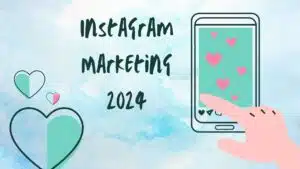Starting a business with a limited budget can be challenging, especially when it comes to marketing. However, with strategic planning and the smart use of resources, businesses with budgets ranging from $0 to $300k can create effective marketing campaigns that drive growth and brand awareness. Here’s a comprehensive guide to help you make the most of your marketing budget, whether it’s zero or closer to three hundred thousand dollars.
Leverage Social Media
Social media platforms are powerful tools for businesses with limited budgets. Here’s how to use them effectively:
- Content Creation: Regularly post engaging and relevant content. Use free tools like Canva for designing graphics and videos.
- Community Engagement: Interact with your audience by responding to comments, joining relevant groups, and participating in conversations.
- Influencer Partnerships: Collaborate with micro-influencers who align with your brand. They often charge less and have highly engaged audiences.
Content Marketing
Content marketing is about creating and sharing valuable content to attract and retain a target audience.
- Blogging: Start a blog on your website. Share insights, how-to guides, and industry news to establish authority. Tools like WordPress or Medium can help you get started.
- SEO Optimization: Ensure your content is optimized for search engines. Use tools like Google Keyword Planner to find relevant keywords.
- Guest Blogging: Write guest posts for established blogs in your industry. This increases visibility and drives traffic back to your site.
Email Marketing
Email marketing is one of the most cost-effective ways to stay connected with your audience.
- Build an Email List: Collect emails through website sign-ups, social media, and in-person events.
- Personalized Campaigns: Use email marketing services like Mailchimp or Constant Contact to create personalized and automated email campaigns.
- Value-Driven Content: Provide subscribers with valuable content such as newsletters, special offers, and updates.

Networking and Partnerships
Building relationships with other businesses and influencers in your industry can amplify your marketing efforts.
- Local Networking: Attend local business events, trade shows, and networking groups to connect with potential partners and customers.
- Cross-Promotions: Partner with complementary businesses for cross-promotions. For example, a bakery and a coffee shop can promote each other’s products.
- Affiliate Programs: Start an affiliate program where partners earn a commission for referring customers to your business.
Referral Programs
Word-of-mouth is incredibly powerful, especially for small businesses.
- Incentivize Referrals: Offer discounts, free products, or other incentives to customers who refer new clients.
- Loyalty Programs: Create a loyalty program to reward repeat customers, encouraging them to spread the word about your business.
Local SEO and Google My Business
For businesses targeting local customers, local SEO is crucial.
- Google My Business: Create and optimize your Google My Business profile. Ensure all information is accurate and encourage satisfied customers to leave reviews.
- Local Keywords: Use local keywords in your content and on your website to attract local traffic.
- Community Involvement: Participate in local events and sponsorships to increase your visibility within the community.
Paid Advertising
When your budget allows, targeted paid advertising can provide a significant boost.
- PPC Advertising: Platforms like Google Ads and Bing Ads allow you to target specific keywords and demographics.
- Social Media Ads: Use Facebook, Instagram, and LinkedIn ads to reach a broader audience. Start with small budgets and scale up based on performance.
- Retargeting Campaigns: Retargeting ads can help convert website visitors who didn’t make a purchase on their first visit.
DIY Public Relations
Getting media coverage can significantly boost your credibility and reach.
- Press Releases: Write and distribute press releases about significant business milestones or product launches.
- Media Outreach: Build relationships with journalists and bloggers who cover your industry. Pitch them story ideas that are relevant and newsworthy.
- Online PR Tools: Use platforms like HARO (Help a Reporter Out) to connect with journalists looking for sources.
Analytics and Adjustments
Track the performance of your marketing efforts and adjust accordingly.
- Google Analytics: Use Google Analytics to track website traffic, user behavior, and conversion rates.
- Social Media Insights: Monitor social media performance using built-in analytics tools to understand what content resonates with your audience.
- A/B Testing: Experiment with different marketing tactics and measure their effectiveness. Continuously refine your strategies based on data.
Conclusion
Marketing a business with a limited budget requires creativity, strategic planning, and a willingness to adapt. By leveraging free and low-cost tools, building relationships, and focusing on content and community engagement, businesses with budgets from $0 to $300k can effectively reach their target audiences and drive growth. Remember, the key to successful marketing is consistency, authenticity, and providing real value to your customers.




